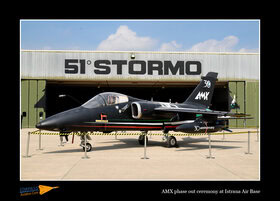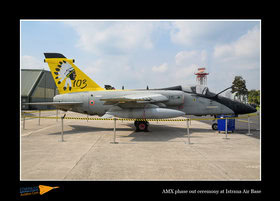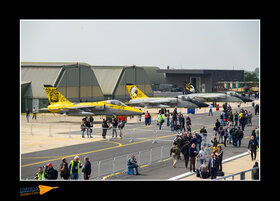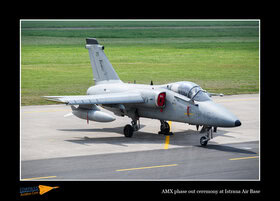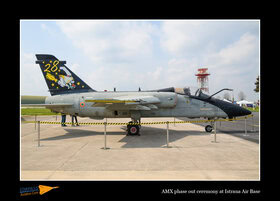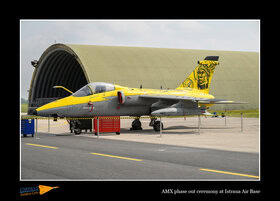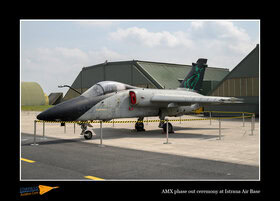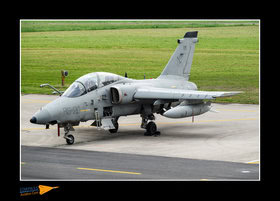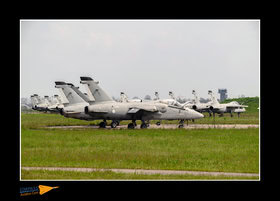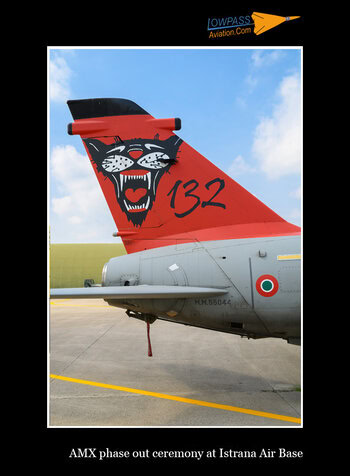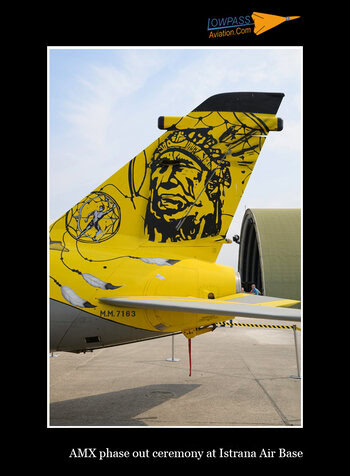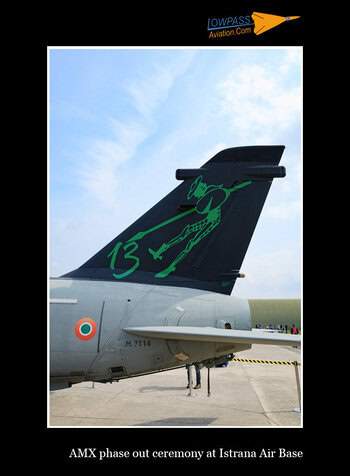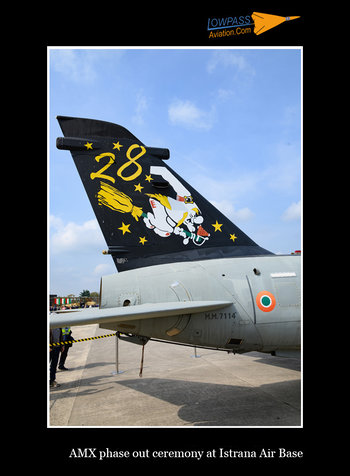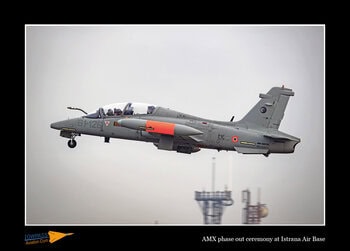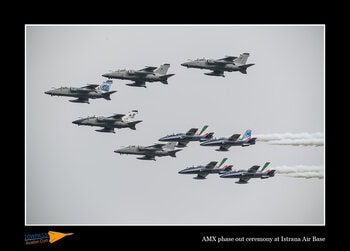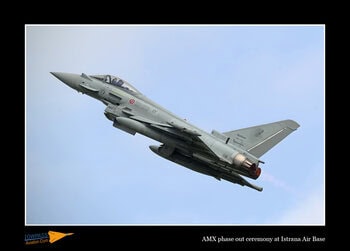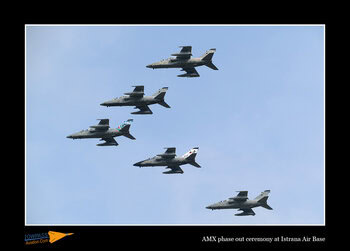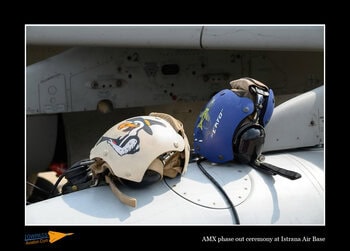History
In 1977 the Italian Air Force issued a requirement for 187 new-build strike fighters for close air support to replace the Aeritalia G.91. In 1980 the Brazilian government announced that they intended to participate in a program to provide a replacement for the Aermacchi MB-326. As a result of a memorandum between Italy and Brazil for the type’s joint development an Italian-Brazil joint venture, called AMX International, was formed to develop, manufacture and market the aircraft in 1981. An agreement was also struck to divide AMX manufacturing between the partners, Aeritalia manufactured the central fuselage, stabilizers and rudders, Aermacchi manufactured the front fuselage and tail cone and Embraer manufactured the wings, air intakes, pylons and drop tanks. Each component of the aircraft was built at one source only.
The first prototype, which was assembled in Italy, made its maiden flight on 15 may 1984. Unfortunately this aircraft was lost on its fifth flight resulting in the death of its pilot. Further testing progressed smoothly and without further incidents. The first Brazilian-assembled aircraft made its first flight on 16 October 1985 followed by the first flight of the first production aircraft on 11 May 1988. The first deliveries to the Italian and Brazilian Air Force began in 1989. The prototype of the two-seat AMX-T training aircraft made its first flight on 14 March 1990. The first AMX was officially delivered to the Italian Air Force on 19 April 1989. The first 6 AMX aircraft were delivered to the Reparto Sperimentale di Volo (RSV) – Experimental Flight Department, based at Pratica di Mare air base near Rome. This unit tested the aircraft in all its aspects including the armament. The first production aircraft were delivered in October 1989 to the 103° Gruppo / 51° Stormo based at Istrana air base.
The planned requirements were 187 aircraft for Italy and 100 aircraft for Brazil but the Italian Air Force acquired a total of 136, 110 single-seat AMX and 26 two-seat AMX-T, aircraft and the Brazilian Air Force acquired a total of 56, 44 single-seat AMX and 12 two-seat AMX-T, aircraft. The Italian Air Force named the AMX “Ghibli”, taken from the hot dry wind of the Libyan desert. The Brazilian Air Force named their AMXs A-1.
In the late 1990s the AMX got a major engine refit, a non-afterburning variant of the Eurojet EJ200 with considerably more trust than the existing engine. In 2007 Embraer began with a major midlife upgrade program and modernization of 53 Brazilian AMXs, focusing on avionics systems and new armament additions to extend the lifespan of the fleet beyond 2027. In 2012 the upgrade program ACOL (Aggionamento Capacitá Operative e Logistiche – Operational and Logistical Capability Upgrade) was launched for 55 AMXs (43 single-seat AMX and 12 double-seat AMX-T) of the Italian Air Force adding a new multi-function color cockpit display, laser INS, Night Vision Goggle (NVG) capability and the aircraft was able to drop Joint Direct Attack Munition guided bombs. In 2012 the Italian military designation for the AMX was A-11A and for the AMX-T it was TA-11A. After the ACOL upgrade program the Italian military designations changed, the A-11A became A-11B (AMX ACOL) and the TA-11A became TA-11B (AMX-T ACOL).
Operational history:
The first operational squadron within the Italian Air Force was 51º Stormo and was formed in November 1989. In February 1992 an Italian Air Force AMX crashed due to an engine failure, resulting in grounding both the Italian and Brazilian AMX fleet. In may that year operations were allowed to restart following modifications on the engines.
In 1995 the first international deployment took place when Italy assigned 6 AMX aircraft for operations over Bosnia during Operation Deny Flight, followed by a similar deployment in support of the IFOR peacekeepers in Bosnia. Unfortunately this deployment was interrupted by another grounding between January and March 1996 due to an engine failure. The following deployment was in 1999 during the Kosovo war. From November 2009 till the end of 2010 four AMXs were deployed to Afghanistan for a reconnaissance role. They shared digital electro-optical and infrared sensor information with ground troops in real time, providing valuable reconnaissance information. A total over 700 combat missions have been flown during this deployment. During the military intervention in Lybia in 2011 the AMXs were employed to this conflict.
During its service life the aircraft was deployed to many operational theaters as mentioned above but the contribution of the AMX in the national scene was also very important. They were active in valuable photographic reconnaissance missions during emergencies and public disasters such as earthquakes and floods.
In Italy the following units were equipped with the AMX:
- 13° Gruppo / 32 Stormo at Amendola
- 14° Gruppo / 2° Stormo at Rivolto
- 28° Gruppo / 3° Stormo at Verona Villafranca
- 101° Gruppo OCU / 32° Stormo at Amendola
- 103° Gruppo / 51° Stormo at Istrana
- 132° Gruppo / 51° Stormo at Istrana
- Reparto Sperimentale di Volo (RSV) at Pratica di Mare
Phase out ceremony
On 5 April 2024 there was a formal retirement (phase out) ceremony at the Aeronautica Militare 51° Stormo at Istrana air base, near Treviso in northern Italy. For this occasion an AMX aircraft was painted in special colors. On the top of the nose is the coat of arms of the Italian Armed Forces with the phrase ‘Virtute Siderum Tenus’ which means ‘Through virtue to stars’. On top of the fuselage there is a large compass and a stylized world to represent the contribution to missions inside Italy and all over the world. On the tail is a pilot who salutes wrapped in the Italian tricolored flag and the phrase ‘Volatus ad astra, memoria in aeternum’ which means ‘Flying to the stars, remembered forever’. The fuel tanks shows the years 1989 – 2024, which indicates the years that the AMX was in service with the Italian Air Force.
During this phase out ceremony 5 AMX aircraft made nice formation flights, including formations with a Tornado, Eurofighter and F-35 and also a formation with 4 MB-339s of the national display team Frecce Tricolore. After all aircraft have landed there was an official ceremony marking the end of the operational status of the AMX within the Italian Air Force.
The day after the phase out ceremony 4 AMX aircraft flew to Piacenza San Damiano air base and became part of the collection of historic flying aircraft. This project will in the future allow enthusiasts of the aviation world and historians to admire the AMX and other assortments.
The authors of Lowpass Aviation.com would like to thank all the involved personnel of the Italian Air Force for their hospitality, time and help during our visit at 51 Stormo, Istrana air base.
